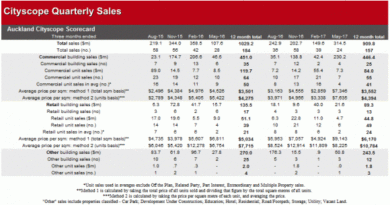Cash Flow vs Growth Property Investment Strategy
updated 4th October 2016
Cash Flow properties
These are properties with a low capital growth profile of 4-6% and high rental yield (return) profile of around 6-10%. Occasionally though the capital growth achieved for these types of properties can be very high. But typically this is only for a short while.
Upsides:
The main advantage with Cash Flow properties is the positive or neutral cash flow that they generate. You can’t lose having money in your pocket (unless you get in too late). Typically these properties are located in regional areas and so they tend to have lower entry prices (as well as lower stamp duty and land tax) – so for investors who don’t have much equity or income it is easy to get started. Moreover, you can use the surplus cash flow to pay down principal to get more equity for future investment;
Because of the popularity of these types of properties it is not uncommon to occasionally achieve strong capital growth gains due to the demand for high yield properties.
Regional areas tend to have slower capital growth over periods of time unless there is an economic change to the area. For example, North Queensland is experiencing growth in property values at the moment due to the mining industry. Traditionally properties in regional North Queensland have been strong cash flow properties. The increase in population has driven a demand for homes and rental accommodation, which in turn pushes the price up for existing properties. These properties would now be giving you good growth.
Buying into the area now however, would give you a higher entry cost and would reduce your ongoing cash flow. Should the mining boom cease or slow down, the demand for properties would drop, which in turn would have an impact on values. So as can be seen, the regional centers can in fact give you both strategies, however you would have to be careful that the growth is not short lived and that then the area reverts back to its normal slower growth pattern.
From a finance perspective the income generated from the asset means it is easier to get a full-doc loan with a higher loan to value ratio (LVR) i.e. you can borrow more (thereby putting in less of your own money).
Downsides:
Because you are generating an income from the positive cash flow, you pay tax along the way. You get taxed on this extra income and money in the tax man’s pocket is going to make it hard for you to create serious wealth.
Because these properties are usually in regional or outer areas they can be quite sensitive to economic cycles. Therefore compared to properties located closer to the centre of our major cities these properties will generate lower capital growth over longer term.
There are also potential higher costs associated with maintenance and more tenancy problems due to socio-economic factors.
From a finance perspective it is harder to get low-doc or no-doc loans for some regional properties due to postcode restrictions imposed by lenders, mostly due to their smaller populations. The result is lower leverage which will reduce your return.
Growth properties:
These are properties with a higher capital growth profile of 7-10% (and occasionally over 12% for a short while) and a lower rental yield (return) profile of 3-5% rent (occasionally below 2.5%).
Upsides:
The main advantage of these types of properties is the fact that these areas are usually inner areas and high population areas which are not affected as much by economic cycles and interest rate. Therefore they usually have higher and consistent capital growth over longer term. This means investors can generate more equity in a quicker period of time which can allow them to invest further.
The government also makes it attractive for investors to purchase these types of properties by offering tax benefits via negative gearing and delayed Capital Gains Tax (CGT).
In terms of finance it is easier to get low-doc and no-doc loans for these types of properties. Most lenders view these types of properties as less “risky” than regional properties, mainly because of the larger populations in these areas. Therefore there is less risk of tenancy problems due to better socio-economic conditions and the fact that there are more buyers in these areas, in case the property ever needs to be sold quickly.
So from an investor’s perspective there are more finance options available for these properties. High leverage is available as it’s easier to get a low-doc or no-doc loans.
Downsides:
This big disadvantage with these properties is the negative cash flow if you take on a normal mortgage at high leverage level. Added to this is the fact that these properties are usually more expensive than cash flow properties, in terms of purchase price, stamp duty and land tax. So as we are seeing in a number of markets across the country at the moment, it is harder for beginners to enter the market, simply because there is greater demand for these types of properties than the supply.
Furthermore, in the short term there is no guarantee for capital growth every year – you may bet on the wrong horse.
The main disadvantage from a finance perspective is that it gets harder to get full-doc loans to access cheaper interest rate mortgage as your portfolio gets bigger.


